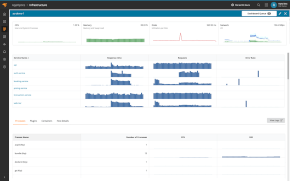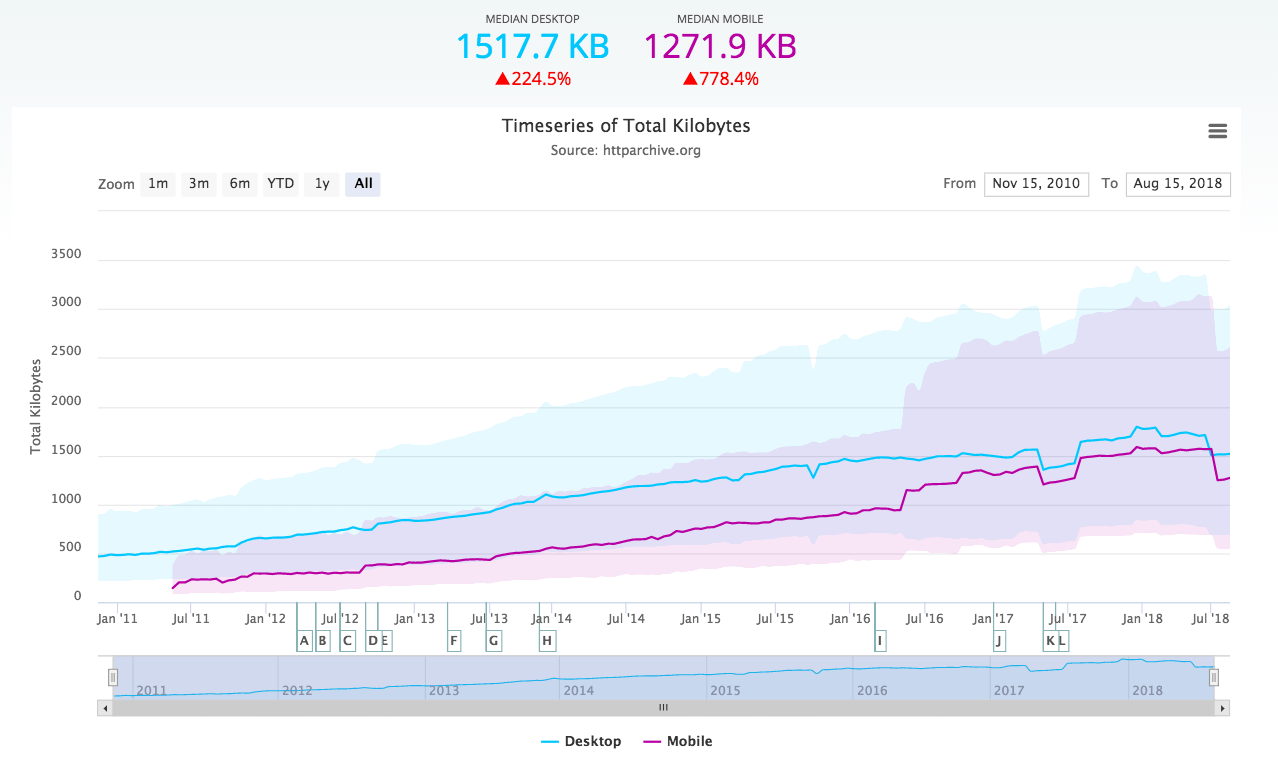When you’re in e-commerce, page load time is crucial.
Any change you make to your site can affect it, as you’ve probably found out the hard way on several occasions.
So you want to make sure your site doesn’t slow down again. Or at least that when it happens, it doesn’t go unnoticed and unaddressed for any longer than it has to.
Relax—you’re in the right place.
In this article, we’ll examine which metrics to track and improve to keep your site in tip-top shape. First, though, let’s review why page load time is so essential in e-commerce.
How Page Load Time Affects the Bottom Line in E-Commerce
The load time of your site’s pages affects your bottom line in more ways than one.
Here’s how.
Slow Pages Get Fewer Visitors Through Search
Organic traffic is a lot cheaper than pay-per-click (PPC), and you want your pages to show up as high as possible in Google’s search results.
Though being ultrafast may not boost your position above the value Google places on its content, being slow can and will lower it. Google has confirmed on several occasions it uses speed as a ranking signal.
A lower position in search results means fewer clicks, fewer visitors, and fewer opportunities to turn visitors into customers.
Slow Pages Cause Visitors to Look Elsewhere, Never to Return
Visitors who have to wait longer than about three seconds abandon a page in droves, and the ones who stay are more likely to abandon their cart. In short, slow pages cause your conversion rates to drop.
To add insult to injury, they move on to greener pastures: one of your competitors’ faster sites. And you may have lost them forever.
This is because 79% of shoppers who are dissatisfied with their experience are less likely to return to your site, and speed always has been and remains a determining factor.
So you want your page load times to be as short as possible.
But how do you achieve this? What exactly is page load time? How do you measure it, and what affects it?
Let’s have a look.
Page Load Time 101
Page load time is the time it takes a browser to retrieve a page with all its resources—images, styling information, scripts to run, etc.—and display it.
It has two main elements:
- How long it takes the page to travel from your web server and other web servers to the browser
- How long it takes the browser to process and paint (render) the page on your visitor’s screen
Factors affecting page load time include the following:
- The performance of your web server and its connection to the internet
- The number and size, or weight, of all the files needing to travel from the web server to the browser
- The structure and logic of the page itself
- The performance of the browser and the machine it’s running on
And, yes, this means your pages can perform differently in different browsers.
You can find a more detailed description of page load time, plus several technical tips, in this article on page speed vs. SEO.
But page load time may not be the best metric to gauge a visitor’s experience.
This is because smart web developers ensure a visitor gets to see something as fast as possible and other stuff loads later or not at all. For example, they wait to load images that won’t show up fully on the first screen.
In other words, a visitor may have a better experience than page load time indicates.
So what do you need to pay attention to?
What Metrics Matter for Page Speed?
Google places a lot of emphasis on user experience in its ranking algorithms.
Speed, as you’ve already seen, is a significant factor in this.
It’s little wonder, then, that Google provides a tool—PageSpeed Insights (PSI)—for web owners and developers to gauge their pages’ performance.
Let’s look at the metrics PSI uses.
First Contentful Paint (FCP)
FCP measures the earliest time you can see part of a page’s content. It’s vital to how a visitor perceives the page’s speed. Before this point, you wouldn’t know anything was happening apart from the browser’s “busy” spinner.
First Input Delay (FID)
FID measures the earliest time a page becomes responsive to user input. It’s another vital user experience metric because, before this point, nothing happens when a visitor tries to scroll, enter information, or click a link.
Largest Contentful Paint (LCP)
Like FCP, LCP is essential in the user’s perception of page speed. It marks the point where the main content—the text of a blog post or a product description in your store—is visible and the page becomes useful.
Cumulative Layout Shift (CLS)
A browser starts painting well before it’s received everything it needs to finalize the display. This means it may have to shift things around as it gets more information. CLS measures when the page’s layout has stabilized.
When Is Your Page Speed up to Par?
When you use PSI to assess the performance of a page, it’ll report “Good,” “Needs Improvement,” or “Poor” for each of the metrics described in the previous section.
When PSI reports “Good” for FID, LCP, and LCS, your page passes its Core Web Vitals exam and you can rest easy knowing you’re providing a good experience for your visitors.
When PSI reports “Needs Improvement” or “Poor” on just one of the three Core Web Vitals metrics, you have work to do.
It may be sooner than you think.
But don’t rest on your laurels when PSI says your website provides an excellent experience for desktop users.
Chances are it’s quite different for mobile users simply because of the slower connection speed.
And you do want to consider them because a benchmark study by SOASTA a couple of years ago showed 47% of all consumers shop using their phones. This percentage has grown and is likely to keep rising.
Considering Google showed three out of four mobile sites take more than 10 seconds to load—well over the recommended three—let’s look at how to improve.
How to Improve Page Speed
What you can do to improve page speed depends on whether you use an e-commerce platform or host your site with a hosting provider.
E-Commerce Platform
With an e-commerce platform, you’re largely in its hands. And usually, they’re good hands.
Your main task is to pick the fastest platform also capable of meeting the other requirements of your online store.
Beyond this, the most you can do is ensure the images you use are no bigger than they need to be and are properly compressed.
Self-Hosted Store
Here, the first order of business is to choose the fastest hosting provider capable of smoothly handling spikes in traffic. For example, a traffic spike might occur when one of your promotions takes off.
Then, it’s a case of measure-optimize-monitor. Measure to know where you are, optimize to improve, and monitor to check whether you’ve actually made an improvement.
Prioritize your checkout process, product pages, and category and search pages.
Here are some tips:
- Focus on mobile users. When they have a good experience, so do desktop users.
- Ensure images are no bigger than they need to be. If you only have 300 by 300 pixels available, use a 300- by 300-pixel picture.
- Use pagination on your category and search pages.
- Only use plug-ins you absolutely need.
- Copy files to your site instead of linking to them on other domains.
- Use a tool like SolarWinds® Pingdom® to monitor and measure page speed. Pingdom helps you diagnose what’s slowing down your site or a specific page, and because it measures more granularly than PSI, it helps you find bottlenecks.
- Check out “Page Speed vs. SEO: Does a Slow Website Affect Rankings?” for technical tips to improve page speed.
Ready, Set, Accelerate
Webstore visitors are an unforgiving bunch. Keep them waiting a second too long and—poof!—they’re gone, possibly never to return.
In e-commerce, page load time matters. It’s as simple as that.
So get ready and set yourself up for some serious speed.
Measure and track your speed regularly so you can address problems when they occur and keep improving to stay ahead of your competitors.
And be sure to check out the 30-day free trial of Pingdom and experience how it helps you measure, analyze, and improve page speed.This post was written by Marjan Venema. With 30+ years in all corners of software development, Marjan’s specialty is writing engaging copy that takes the terror out of tech: making complicated and complex topics easy to understand and
























